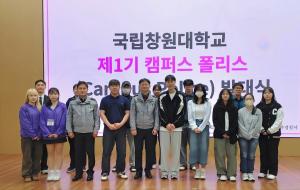 |
| ▲ Giant Pengsoo, a gender neutral character from EBS(source: https://www.ebs.co.kr/search?query=%ED%8E%AD) |
Jung Eun-Kyeong, the first female director of the Center of Disease Control Prevention, can be seen on TV giving briefings on COVID-19. Kang Kyung-Wha, the first female Minister of Foreign Affairs, is coordinating international efforts to help fight COVID-19. As more women are entering the workforce, female leaders can be seen in the media much more than in the past. How will these female leaders be shown in the media influence children and teenagers?
Chancellor Angela Merkel is the first female Chancellor of Germany. Her inauguration as chancellor necessitated the creation of the word ‘Kanzlerin’, which means ‘female chancellor’ in German. Chancellor Merkel has served four consecutive terms since 2005. In Germany, children and teenagers are accustomed to having a female chancellor. When Chancellor Merkel said she would only serve as chancellor until 2021, German teens went so far as to ask, “Should men become chancellors?” Chancellor Merkel has created a new norm for children and teenagers. This new norm of women in power contrasts against the time when Kanzlerin was a new word. How the roles of women and men are portrayed in the media has a significant effect on the cognitive development of children and teenagers.
Animation and cartoons that children watch can heavily influence children. Some animations that have come out in the past portray gender stereotypes. ‘Pororo the Little Penguin’ has 11 main characters, of which only two are female. ‘Robocar POLI’, and ‘Tayo the Little Bus’ each have 4 main characters, with only one female character. The percentage of female characters in children’s animated shows is very low. Male characters often have personality traits like having courage and a sense of curiosity. In contrast, female characters are typically defined with personality traits like pretty, kind, and timid, an exception being Pororo's Patty. Male characters often take a more active role in stories, while female characters are more passive. Male characters are typically given blue color schemes, and female characters are typically given pink color schemes. The main characters in older animated shows were primarily male characters. Children are taught to question gender stereotypes in kindergarten and elementary school, but those stereotypes are enforced in children’s animation. Children learn gender stereotypes from media that portrays the stereotypical roles of men and women.
Stereotypes limit development by putting pressure on individuals to conform to negative stereotypes. This is called ‘stereotype threat’. According to the book ‘Option B’ by Sheryl Sandberg, girls around the world think they are worse at math than boys. When reminded of their gender before taking a math test, girls performed worse than boys on the math test. When the same test was called a problem-solving test, the gender gap disappeared. Women who grew up seeing gender stereotypes portrayed in the media have the same abilities as men, but tend to be hesitant to challenge gender stereotypes.
Recently, animated characters without gender roles are starting to gain popularity. Pengsoo is the main character of the EBS children's program ‘Giant Peng TV’. So Pengsoo has no assigned gender. when asked about having a girlfriend, Pensoo answered, “I don’t have a girlfriend or a boyfriend.” Producer Lee Seul-Yena, who helped create Pengsoo, said, “Pengsoo is a penguin because it is difficult to distinguish the sex of penguins. By creating a gender neutral character, we can challenge gender stereotypes and think outside the box when producing content.” Pengsoo is a gender neutral character who is opposed to traditional gender roles. Disney also shows enterprising female characters such as Moana and Elsa, breaking away from the traditional princess stories of characters like Cinderella and Snow White.
How gender is portrayed in the media has a big influence on children. It is good to have equal depictions of men and women in popular media. With feminism growing as a movement, the number of programs and animated shows targeting women is increasing, but it is hard to say how influenced they are by patriarchal society. Therefore, children need stories about enterprising women and stories of female leaders. Stories with strong female role models will have a positive influence on teenage girls and foster a better understanding of gender in teenage boys. It would be great if more positive portrayals of male and female characters were created so that children can grow out of gender stereotypes and become people who choose a future uninfluenced by negative stereotypes.
By Choi yuri, cub-reporter 20160254@changwon.ac.kr
<저작권자 © The Campus Journal, 무단 전재 및 재배포 금지>

 Shrinkflation, Consumer Deception
Shrinkflation, Consumer Deception




